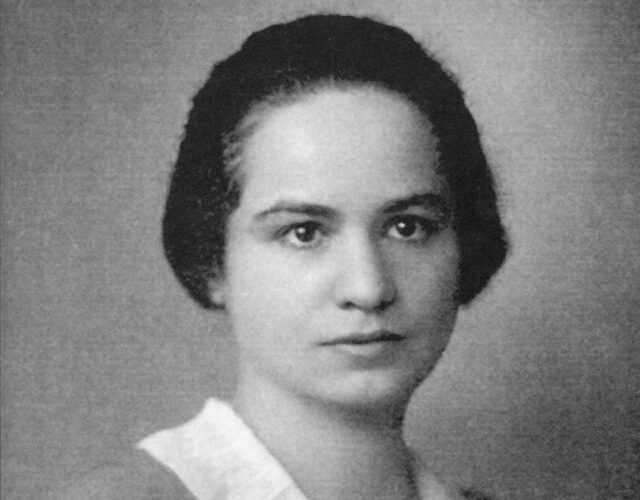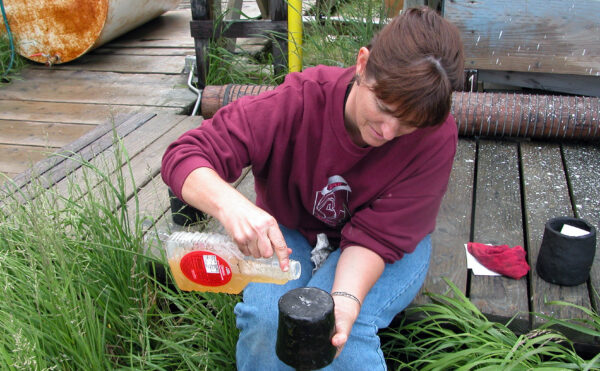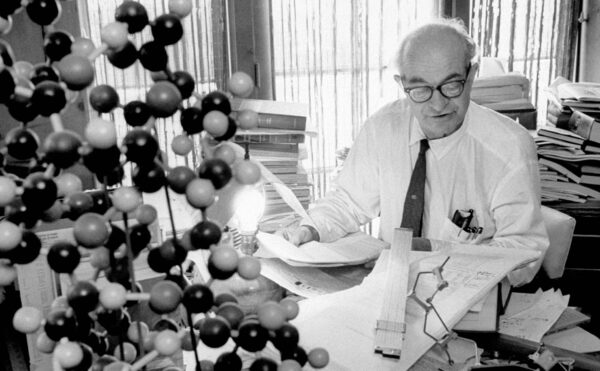Some scientists, despite their brilliance and ability, toil in the shadows their entire lives, never properly acknowledged and soon forgotten. Sometimes they are just unlucky, never catching the right professional breaks; sometimes the reason is a matter of politics or personal rivalries; and sometimes it’s because the scientist is a victim of prejudice and discrimination. For Austrian physicist Marietta Blau, it was all the above.
In the early decades of the 20th century, scientists working to understand the newly revealed mysteries of nuclear physics had limited tools with which to probe the structure of the atom. Theorists such as Albert Einstein might require only paper and blackboard to do their work, but experimental physicists needed instruments to measure, observe, and record. They relied on the Geiger counter to detect charged particles and the Wilson cloud chamber to display the particles’ tracks. A physicist could spend hours sitting in a darkened lab, peering into a microscope to spot tiny flashes created by ionizing particles in a phosphorescent material. But these fairly crude devices had little capacity to record data and were somewhat hit-and-miss in reliability. There had to be a better way.
Marietta Blau found a way at the intersection of physics and photography. Blau was born in 1894 into an intellectually inclined Viennese Jewish family. She pursued an early interest in science and mathematics at the University of Vienna and graduated with her PhD in 1919 at the age of 24. She worked in industrial jobs for a time before moving to Germany to teach radiology to medical students.
In 1923 Blau returned to Austria to care for her sick mother. With the financial support of family, occasional grants, and consulting work, she took up a mostly unpaid position at Vienna’s Radium Institute and began to investigate how specially formulated photographic emulsions spread on films and photographic plates could be used to capture the tracks of speeding subatomic particles.
Before the 21st century, photography was all about film. More specifically, it was about a chemical emulsion of ingredients carefully layered on a thin strip of plastic or glass, and how those ingredients reacted when exposed to light. The type of film you chose depended on the light you wanted to capture—how bright it was, what colors you wanted, even the wavelength of the light. All these factors influenced the type of film chosen and, hence, the formulation of the emulsion. Also imperative was how the film was developed—how chemical changes caused by light exposure could be made permanent to create a visible image.
A physicist could spend hours sitting in a darkened lab, peering into a microscope to spot tiny flashes created by ionizing particles.
A particle, such as a speeding proton, isn’t seen directly but by the evidence of its passing—the track it leaves behind—much like the vapor trail of an unseen jet high in the twilight sky. A particle’s mass, speed, and electrical charge will affect the microscopic grains of an emulsion in various ways, leaving different sorts of tracks in its wake.
At the Radium Institute, Blau developed ways to vastly improve the fragile and unreliable nuclear emulsion films that English physicist Ernest Rutherford and others had been using. She experimented with various chemical formulas, types of film, and development processes, and worked with photographic manufacturers, such as Agfa and Ilford, to determine the best techniques to capture a variety of particles. Of special interest were cosmic rays, the mysterious particles from outer space first discovered by Victor Hess in 1912.
As cosmic-ray research increased in the 1930s, the advantages of Blau’s nuclear emulsions became even clearer to experimenters. Her interest in this special application led to perhaps her most important scientific contribution.
Since cosmic rays are scattered and attenuated by Earth’s atmosphere, researchers like to get their detecting apparatus as high as possible, which in the 1930s meant high-altitude balloons and mountaintops. Beginning in 1932, Blau and her chief assistant, Hertha Wambacher, placed specially designed emulsion plates about 7,500 feet above sea level on a mountain near Innsbruck, Austria, at Hess’s Hafelekar observatory. When the plates were recovered and developed, they found plenty of cosmic ray tracks, mostly protons, as expected. But in 1937 they found the unexpected. Unlike most particle tracks, which are basically straight or curving lines with a beginning and end, some of the tracks ended in odd starlike patterns, as if tiny fireworks had exploded. In a letter to the journal Nature, Blau called them disintegration stars or, in German, Zertrümmerungsterne.
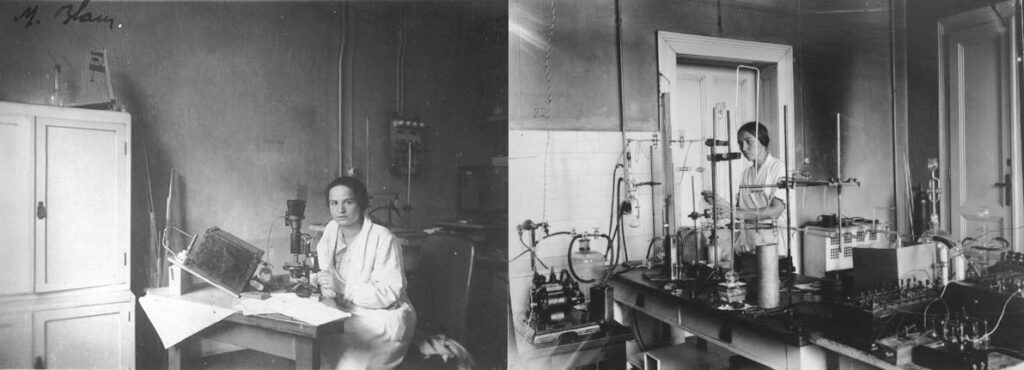
Blau (left) and her chief assistant, Hertha Wambacher, at the Radium Institute, ca. 1925.
The physics community was electrified. Blau and her nuclear emulsions had found the first hard evidence of something scientists had been trying to confirm for years: the disintegration of the nuclei of a heavy atom, such as silver or bromine, by the impact of another particle, in this case, a cosmic-ray proton. “By showing that emulsions had come of age for reliably recording high-energy nuclear events, the discovery launched the field of particle physics,” writes historian Ruth Lewin Sime.
But just as Blau’s scientific career seemed ready to take off, the growing darkness of Nazism descended on her in direct and personal ways.
Blau had made plans for further experiments on balloon flights and at Hafelekar and other mountaintop observatories, but two major complications stood in her way. One was the perennial lack of funding she faced at the Radium Institute; the other was her inability to secure a permanent academic position—chiefly the result of Nazi-inspired antisemitism already gripping Germany and quickly worsening in Austria. (Apparently there was another factor: when inquiring about promotion, she was reportedly told, “A woman and a Jew, that’s just too much!”)
Wambacher and several other of Blau’s colleagues at the Radium Institute were ardent Nazis, and even before the 1938 German annexation of Austria they were maneuvering to steal credit for her work and have her removed. As her personal and professional situation rapidly deteriorated along with the political climate, Blau realized it was time to leave.
Thankfully, she wasn’t completely without friends. As with many other Jewish scientists threatened by Nazism, colleagues in other countries looked for ways to help. A chemist friend at the University of Oslo offered Blau a temporary job for a semester, while Albert Einstein, by then in the United States, tried to help her find refuge. He finally managed to secure a job for her at the National Polytechnic Institute in Mexico City, where Blau and her mother moved in November 1938. Austria had fallen to Hitler that spring, right after she left for Oslo. As she later wrote to a friend, she was “perhaps the last Austrian to pass the German border.”
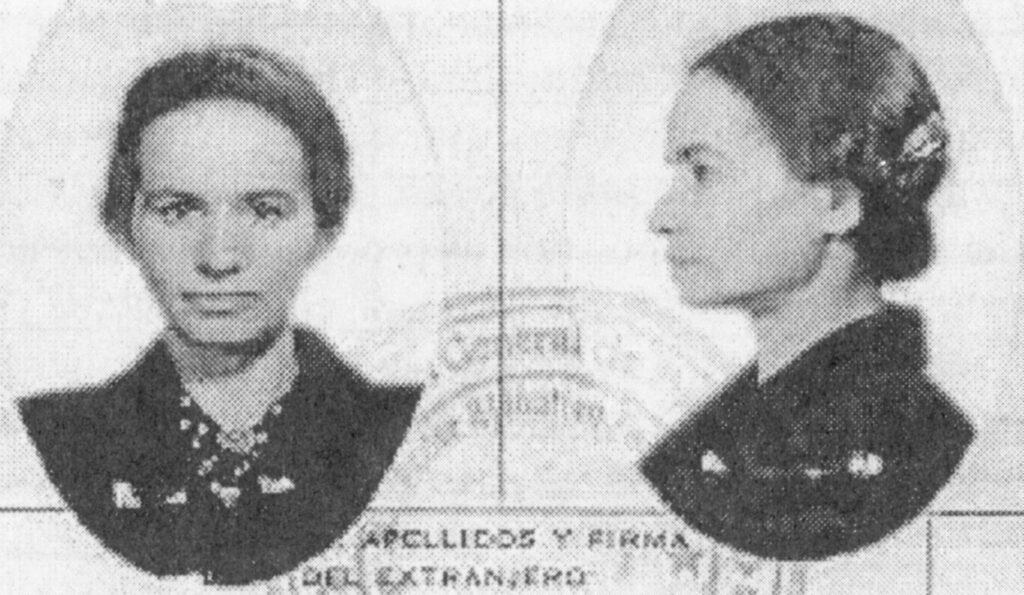
Mexico saved Blau from the Holocaust, but the country never truly felt like home, professionally or personally. A lack of financial and scientific resources left her largely unable to continue her research. She supported herself and her mother by teaching undergraduate physics and doing routine industrial work. Meanwhile, Wambacher and other Nazi colleagues continued to flourish, publishing papers on emulsions and cosmic rays, building on Blau’s research while ignoring or barely acknowledging her existence. They had the considerable benefit of her scientific notebooks and data, most of which she had been forced to leave behind when fleeing Austria.
With her work situation in Mexico increasingly difficult, Blau finally managed to move to the United States in 1944 to work as an industrial scientist for several New York companies. After a brief period in a small Wisconsin town, she returned to New York in 1948 to take up an academic position at Columbia University. Two years later she moved to the Atomic Energy Commission at Brookhaven National Laboratory. At last, she was truly back in the research game, in her own field, and with access to the latest advanced equipment. She proved herself a pioneer again—using her photographic methods in conjunction with the latest cyclotrons and particle accelerators.
Her fellow Austrian and Nobel Prize–winning physicist Erwin Schrödinger recommended her and Wambacher to the Nobel Committee for the 1950 Nobel Prize in Physics for their cosmic ray work and development of the nuclear emulsion technique. But her long absence from the field and relative obscurity cost her. The physics prize went instead to British scientist Cecil F. Powell, who had built on Blau’s work and perfected the photographic emulsion method, using it to discover pi-mesons (pions) in cosmic rays in 1937.
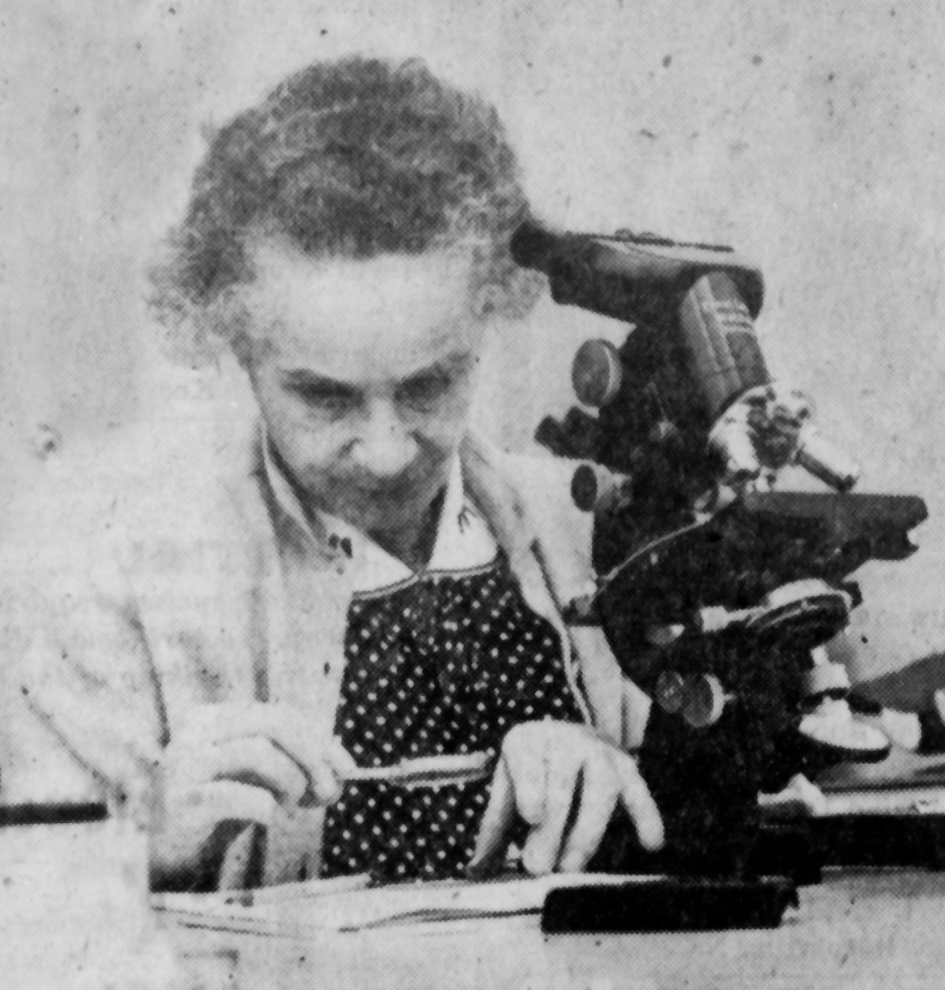
Her brief shot at glory and scientific immortality gone, an aging Blau spent the rest of her life in the shadows, steadily declining in health and energy. Sime notes, “For Marietta Blau the 1950 Nobel Prize completed the expulsion that the Nazis had begun twelve years before.” She spent several years in a research position at the University of Miami, doing what she could with emulsions at a time when scientists were abandoning them for bubble chambers. As historian Peter Galison writes, “Unlike a cyclotron or even an electronic apparatus, the emulsion was an instrument well suited, however awkward its images, to those on the margin.”
After 22 years away from home, Blau finally returned to Vienna in 1960. But even there she was largely sidelined, again working in an unpaid position at the Radium Institute, scraping by on pensions from her U.S. jobs and financial help from her surviving family. She couldn’t even afford health insurance. Schrödinger again recommended her for the Nobel, but to no avail. A lifetime of heavy smoking and repeated exposure to radiation sources caught up with her, and she died of cancer and heart disease on January 27, 1970. Her passing went unnoticed by the world’s scientific community.
Her brief shot at glory and scientific immortality gone, an aging Blau spent the rest of her life in the shadows, steadily declining in health and energy.
“Constantly on the move, Blau was nowhere long enough to become fully visible,” observes Galison. Whatever roles a peripatetic life, political and personal upheavals, and mindless prejudice played in her lack of recognition, Marietta Blau deserves to be remembered and celebrated with the many other scientists whose contributions have been overlooked and disregarded.

